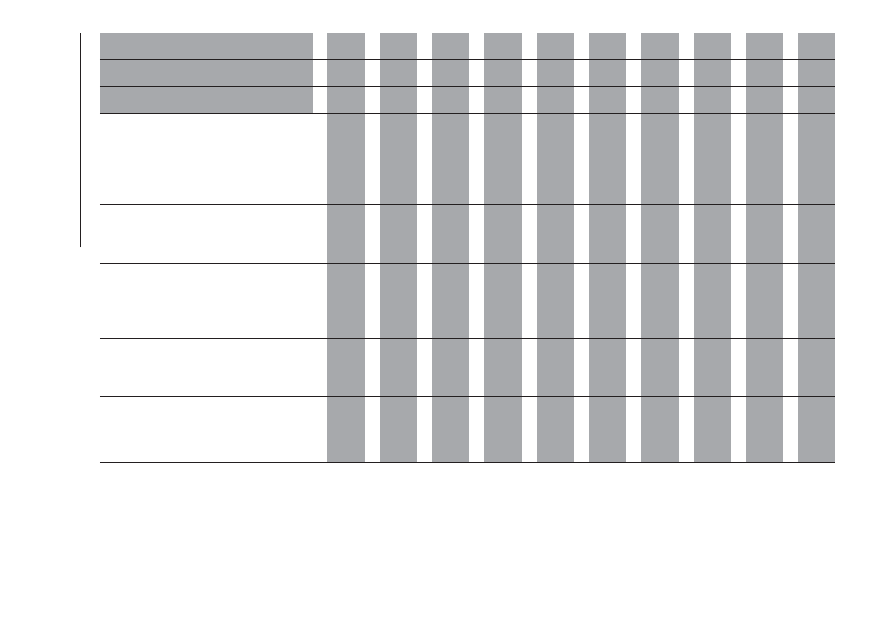Fiat Punto (2018 year). Manual - part 8

Thousands of miles
9
18
27
36
45
54
63
72
81
90
Thousands of kilometres
15
30
45
60
75
90
105
120
135
150
Years
1
2
3
4
5
6
7
8
9
10
Visually inspect condition of:
methane pipes and connectors and
methane cylinder fastening, restore if
necessary (Natural Power versions
only)
●
●
●
●
●
Check pressure regulator and
replace internal filter, if necessary
(Natural Power versions only)
●
●
●
●
●
Check fuel system operation and
parameters using self-diagnosis
socket (Natural Power and LPG
versions only)
●
●
●
●
●
●
●
●
●
●
Check mechanical tappet clearance
and restore, if necessary (Natural
Power and LPG versions only)
●
●
●
●
●
Check tightening torque of cylinder
fastening bands (Natural Power
versions only)
●
●
●
120
SER
VICING
AND
CARE